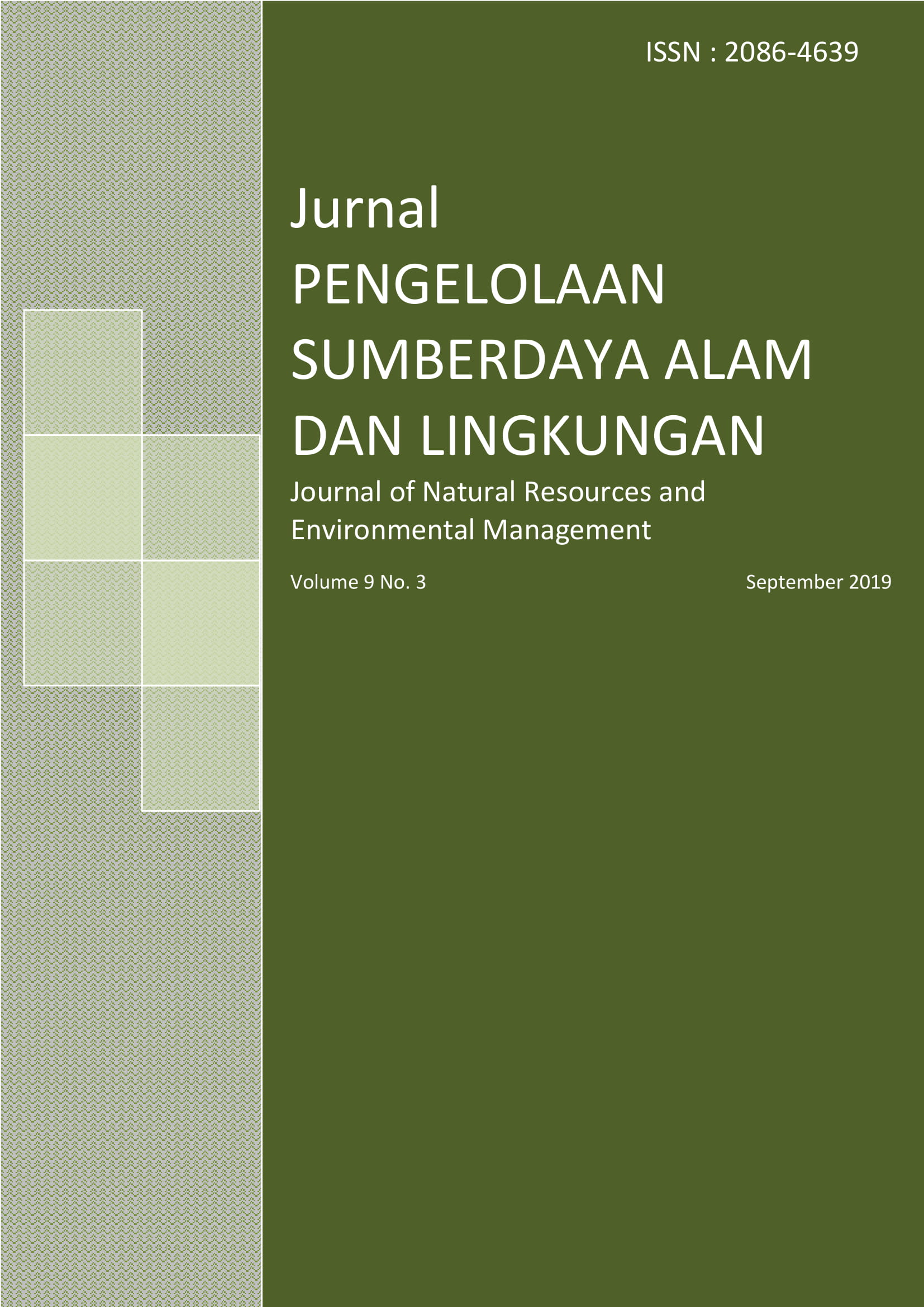Penerapan Produksi Bersih untuk Meningkatkan Efisiensi Proses Pelapisan Logam
Abstract
References
[KLH] Kementrian Lingkungan Hidup. 2003. Kebijakan Nasional Produksi Bersih. Jakarta: Negara Lingkungan Hidup.
[UNEP] United Nations Environment Programme. 2003. Cleaner production assessment in industries. [internet]. [di unduh 15 Apr 2017]. Tersedia pada: http://www.uneptie.ora/pc/cp/understanding.htm.
Andrisel P, Sri H. 2015. Karakterisasi sifat mekanik hasil elektroplating nikel karbonat (NiCO3) pada tembaga (Cu). Jurnal Fisika Unand. 4(1): 83–90.
Athiek SR, Nurul HF, Alvika MS. 2014. Pengaruh kada Ni terhadap sifat permukaan katalis Ni berbahan baku limbah elektroplating. Di dalam: Seminar nasional sains dan teknologi. Medan: Universitas HKBP Nommensen. hlm 9.
Basaran B. 2013. What makes manufacturing companies more desirous of recycling. Jurnal management of environmental quality. 24(1): 107-122.
Dwi AS, Tommy K, Dian L. 2008. Bioteknologi lingkungan untuk penanggulangan limbah mengandung krom. Jurnal Tanah dan Lingkungan. 10(2): 50-53.
Generousdi, Rodesri M. 2005. Penerapan teknologi produksi bersih pada industri elektroplating. Jurnal Teknik Mesin. 2(1): 11-18.
Hadi S. 2016. Pengaruh komposisi larutan kimia dan waktu pelapisan chrom terhadap ketebalan dan kekerasan lapisan permukaan pada plat kuningan. Jurnal Teknik Mesin. 6(1): 38-42.
Haryono AT. 2016. Analisis Penerapan Produksi Bersih Industri
Kertas Studi Kasus di PT. Pindodeli Pulp and Paper Mills Indonesia Unit Paper Machine 4 [tesis]. Bogor: Institut Pertanian Bogor.
Indrasti NS, Fauzi AM. 2009. Produksi Bersih. Bogor: IPB Press.
Indrasti NS. 2012. Metodologi dan Prosedur Audit Produksi Bersih (Neraca Massa, Energi, dan Limbah). Bogor: IPB Press.
Lestina TIS. 2012. Dampak dan pengendalian limbah cair industri. Di dalam: Karya Ilmiah. Medan: Universitas HKBP Nommensen. hlm 9.
Manope BF, Kindangen P, Tawas H. 2014. Analisis keleyakan usaha komoditas biji dan fuli pala melalui penilaian aspek finansial pada pedagang pengumpul di pulau siau. Jurnal EMBA. 2(4): 320-330.
Marimin. 2004. Pengambilan Keputusan Kriteria Majemuk. Jakarta: Grasindo.
Moertinah S. 2008. Peluang-peluang produksi bersih pada Industri Tekstil Finishing Bleaching (Studi Kasus Pabrik Tekstil Finishing Bleaching PT.Damaitek Semarang) [tesis]. Semarang: Universitas Diponegoro.
Ronita RS, Regina TP. 2017. Optimasi kondisi proses electroplating logam kromium dalam limbah cair elektroplating. Jurnal Kimia Dasar. 6(4): 134-142.
Sahat P. 2004. Minimisasi Limbah pada Industri Pelapisan Logam Studi Kasus PT. Arbintek Cakung Jakarta Timur [tesis]. Jakarta: Universitas Indonesia. Satmoko Y, Nusa SI. 2005. Pengolahan air limbah industri kecil pelapisan logam. Jurnal Air Limbah. 1(1): 17-29.
Sudana IM, Arsani IAA, Waisnawa S. 2014. Alat simulasi pelapisan logam dengan metode elektroplating. Jurnal Logic. 4(3): 190-198.
Sumada K. 2006. Kajian instalasi pengolahan air limbah industri elektroplating yang efisien. Jurnal Teknik Kimia. 1(1): 26-35.
Triwulandari SD, Dedy S, Dorina H. 2015. Model pemilihan industri komponen otomotif yang ramah lingkungan. Jurnal Teknik Industri. 1(6): 208-216.
Yastri, Zainus, Sudarno. 2015. Pengaruh ph dan waktu proses dalam penyisihan logam berat Cr, Fe, Zn, Cu, Mn, dan Ni dalam air limbah industri elektroplating dengan proses oksidasi biokimia. Jurnal Teknik Lingkungan. 4(3): 100-109.
Authors
Authors who publish with this journal agree to the following terms:
- Authors retain copyright and grant the journal right of first publication with the work simultaneously licensed under a Creative Commons Attribution License that allows others to share the work with an acknowledgement of the work's authorship and initial publication in this journal.
- Authors are able to enter into separate, additional contractual arrangements for the non-exclusive distribution of the journal's published version of the work (e.g., post it to an institutional repository or publish it in a book), with an acknowledgement of its initial publication in this journal.
- Authors are permitted and encouraged to post their work online (e.g., in institutional repositories or on their website) prior to and during the submission process, as it can lead to productive exchanges, as well as earlier and greater citation of published work (See The Effect of Open Access).
Article Details
10.18502/kss.v9i8.15565
10.1088/1755-1315/1211/1/012010
10.1088/1755-1315/916/1/012024






